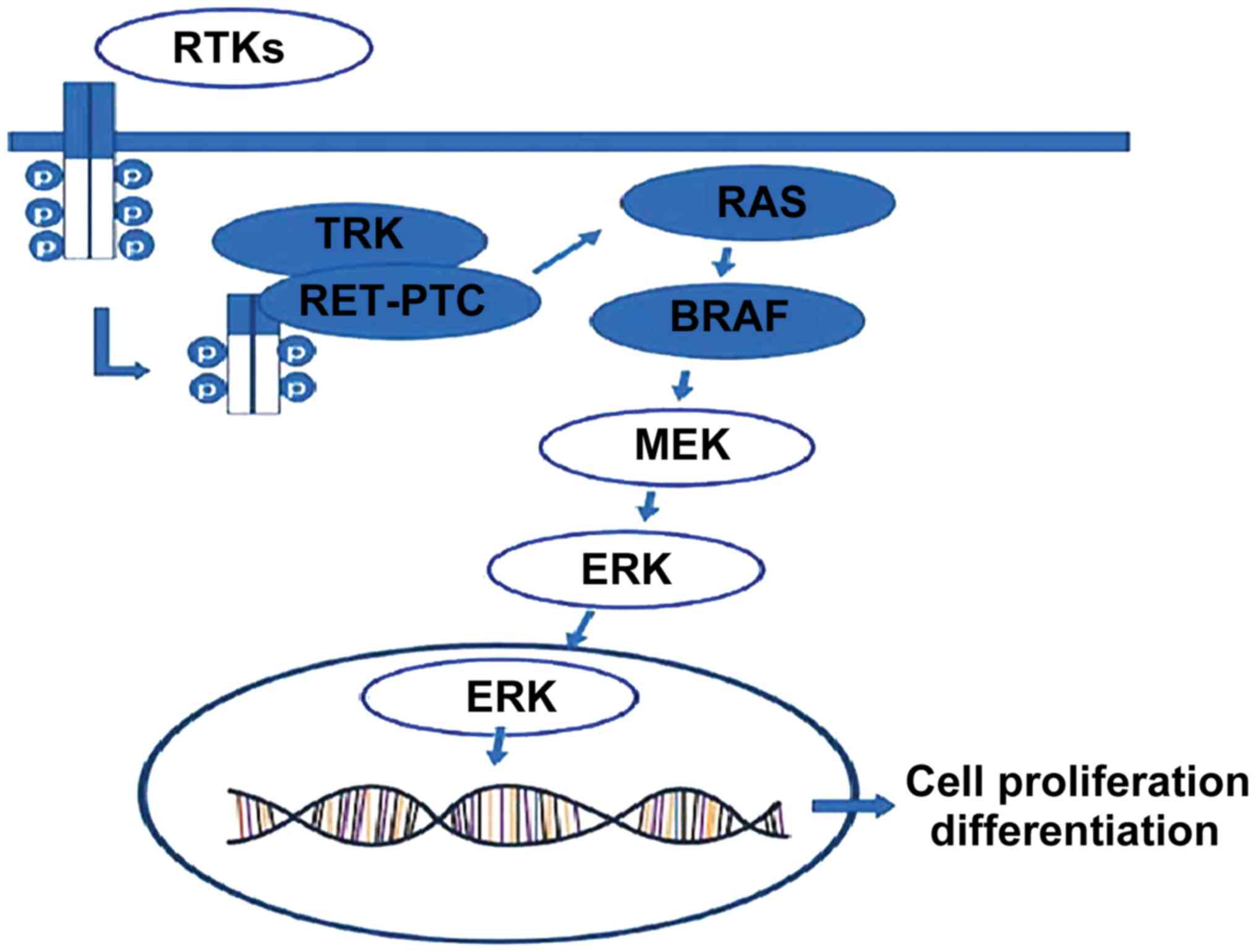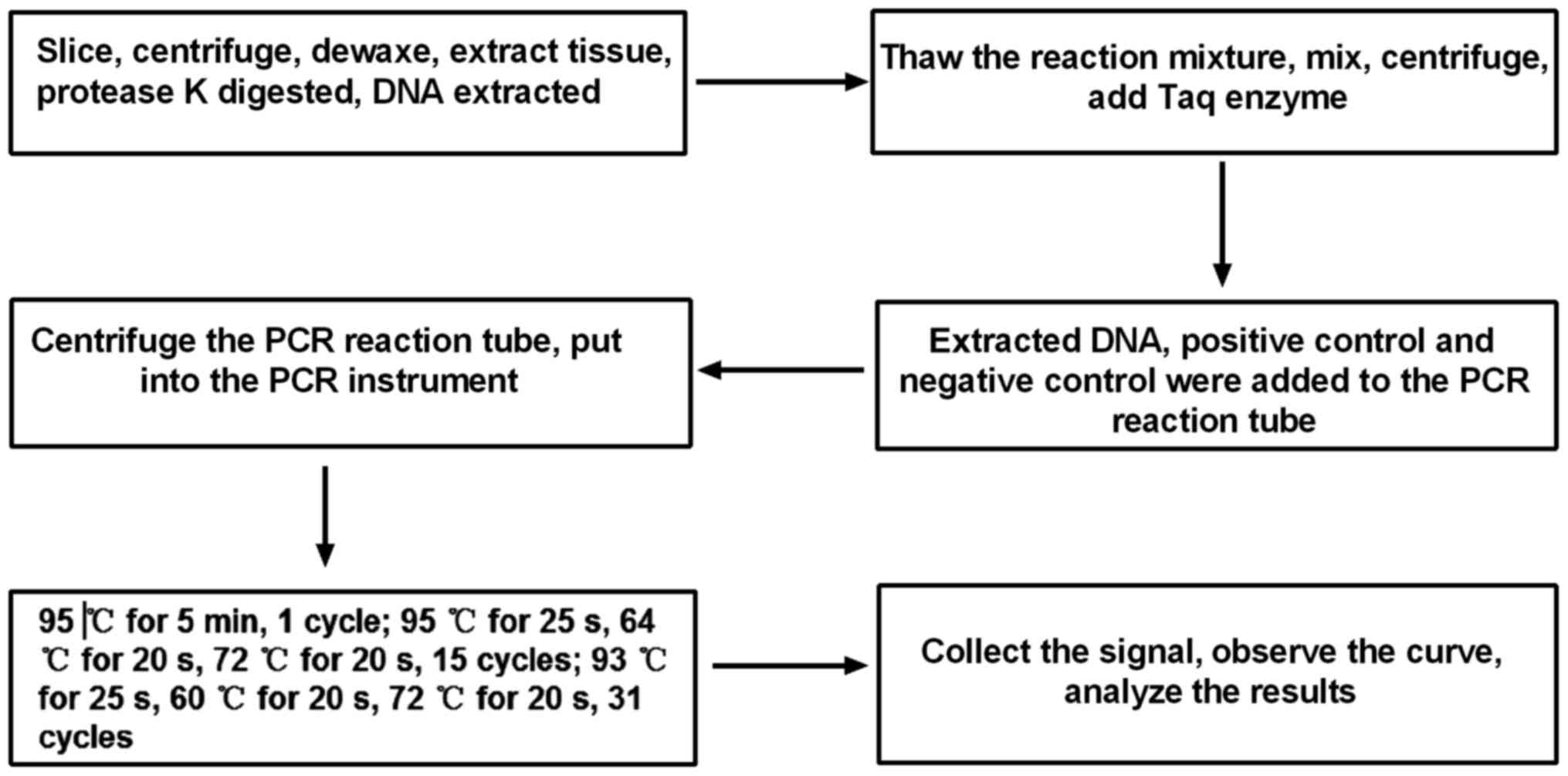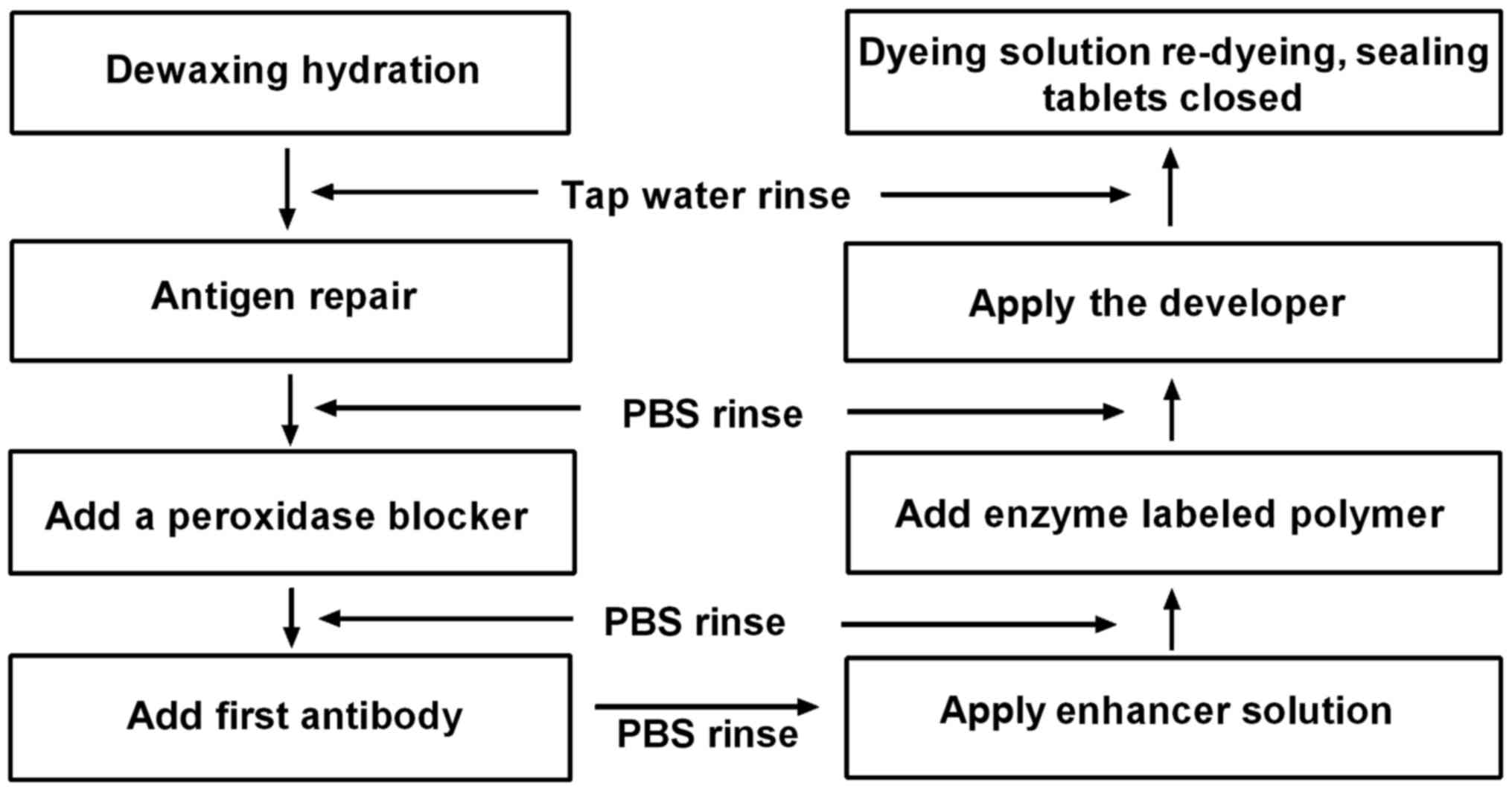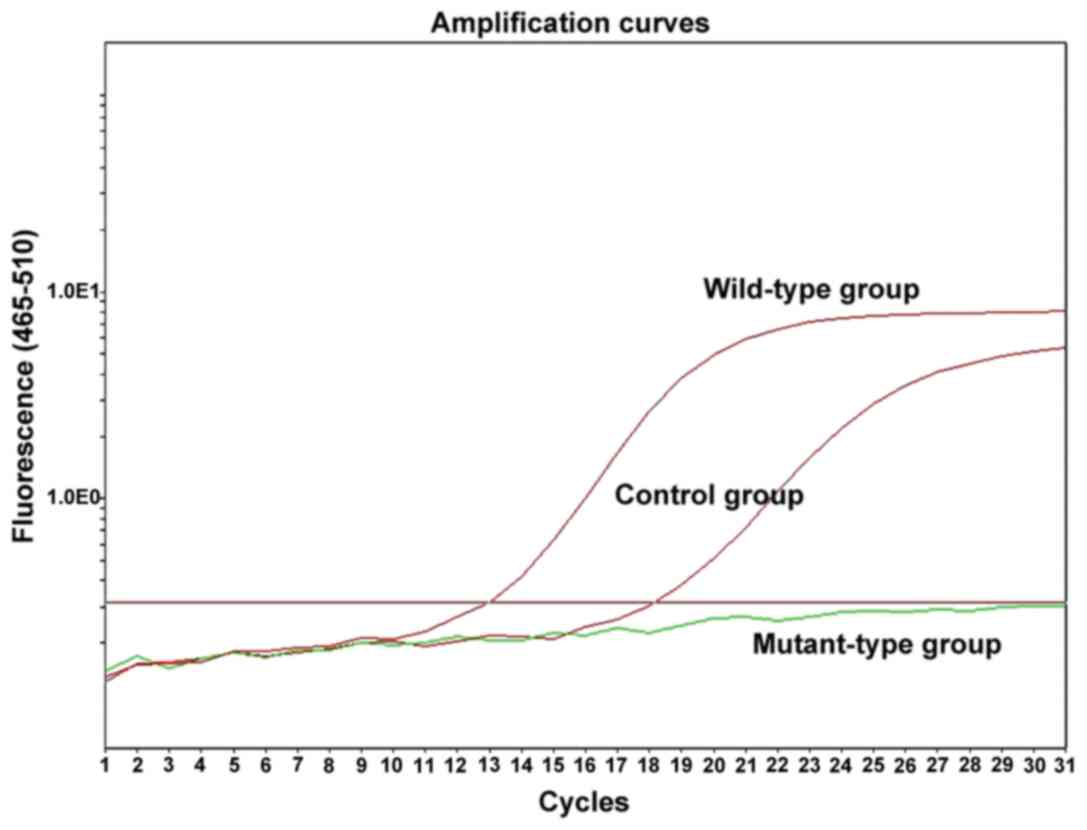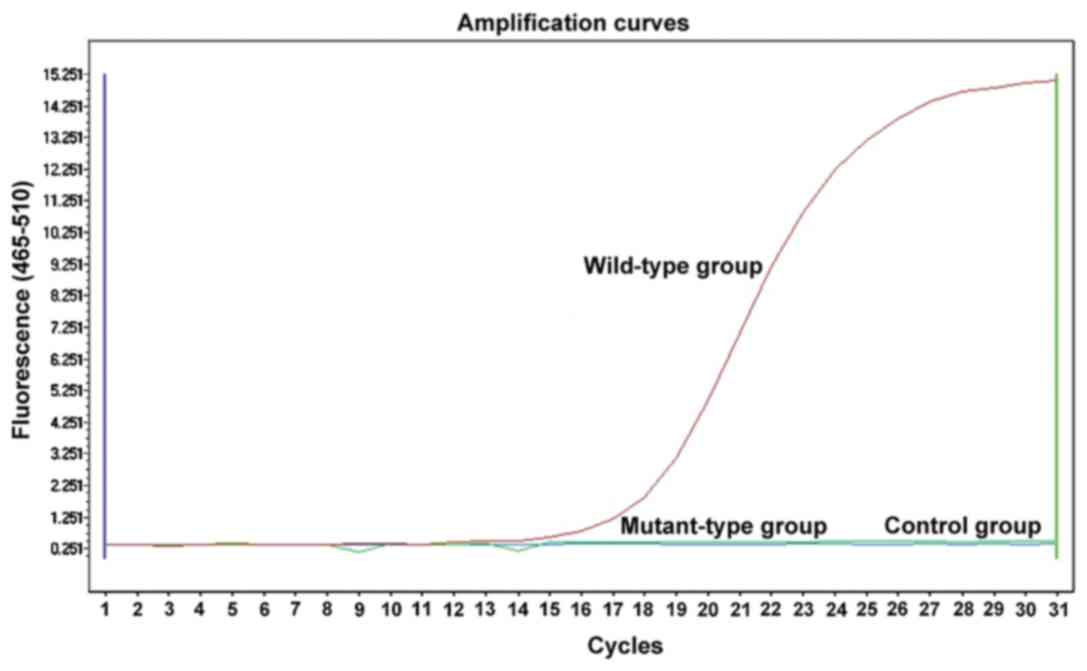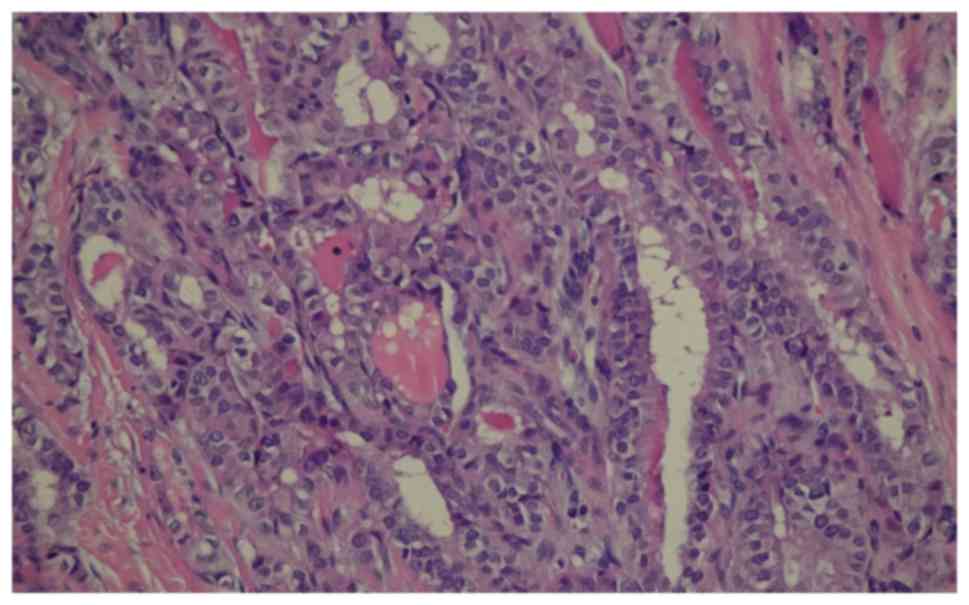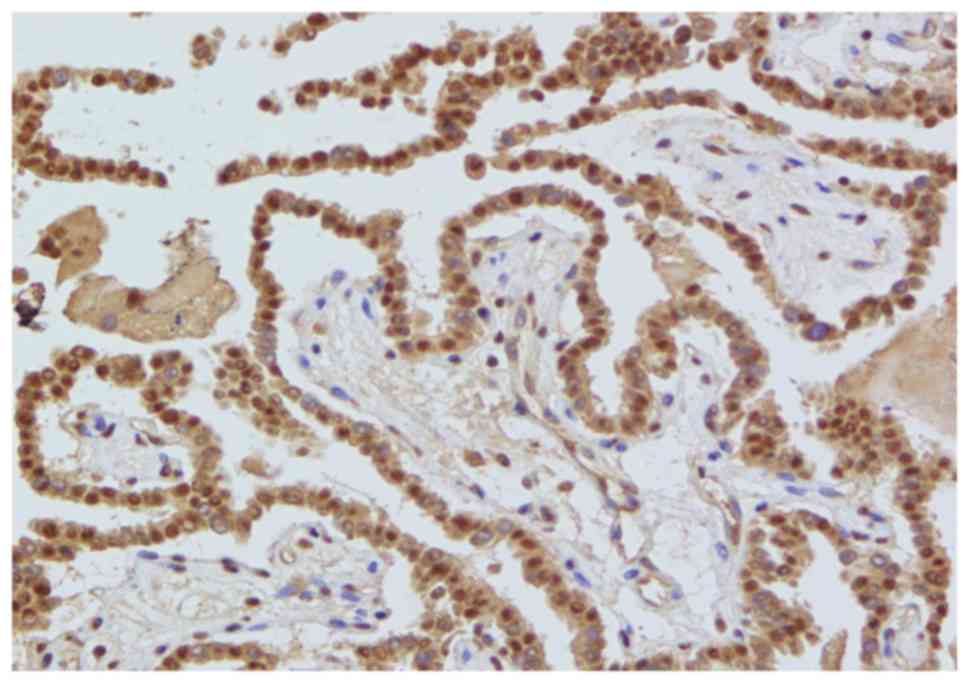|
1
|
Siegel R, Naishadham D and Jemal A: Cancer
statistics, 2013. CA Cancer J Clin. 63:11–30. 2013. View Article : Google Scholar : PubMed/NCBI
|
|
2
|
Cox AE and LeBeau SO: Diagnosis and
treatment of differentiated thyroid carcinoma. Radiol Clin North
Am. 49:453–462. 2011. View Article : Google Scholar : PubMed/NCBI
|
|
3
|
Jemal A, Siegel R, Ward E, Hao Y, Xu J and
Thun MJ: Cancer statistics, 2009. CA Cancer J Clin. 59:225–249.
2009. View Article : Google Scholar : PubMed/NCBI
|
|
4
|
Cao Y, Xia J, Li Y, Wang L and Jiang Z:
Study on the effect of salt plus iodine on the hospitalization of
thyroid diseases in a hospital. Chin J Health Stat. 29:236–242.
2012.(In Chinese).
|
|
5
|
Zhao H, Jiang W, Guan F, Hou F and Cheng
H: Application of 131I in the study of residual thyroid
tissue dose after differentiated thyroid cancer. J Jilin Univ (Med
Ed). 35:191–194. 2009.(In Chinese).
|
|
6
|
Sciuto R, Romano L, Rea S, Marandino F,
Sperduti I and Maini CL: Natural history and clinical outcome of
differentiated thyroid carcinoma: A retrospective analysis of 1503
patients treated at a single institution. Ann Oncol. 20:1728–1735.
2009. View Article : Google Scholar : PubMed/NCBI
|
|
7
|
Choi YM, Kim TY, Song DE, Hong SJ, Jang
EK, Jeon MJ, Han JM, Kim WG, Shong YK and Kim WB: Papillary thyroid
carcinoma arising from a thyroglossal duct cyst: A single
institution experience. Endocr J. 60:665–670. 2013. View Article : Google Scholar : PubMed/NCBI
|
|
8
|
Vergamini LB, Frazier AL, Abrantes FL,
Ribeiro KB and Rodriguez-Galindo C: Increase in the incidence of
differentiated thyroid carcinoma in children, adolescents, and
young adults: A population-based study. J Pediatr. 164:1481–1485.
2014. View Article : Google Scholar : PubMed/NCBI
|
|
9
|
Londero SC, Krogdahl A, Bastholt L,
Overgaard J, Pedersen HB, Frisch T, Bentzen J, Pedersen PU,
Christiansen P and Godballe C: Papillary thyroid carcinoma in
Denmark 1996-2008: An investigation of changes in incidence. Cancer
Epidemiol. 37:e1–e6. 2013. View Article : Google Scholar : PubMed/NCBI
|
|
10
|
Radespiel-Tröger M, Batzler WU, Holleczek
B, Luttmann S, Pritzkuleit R, Stabenow R, Urbschat I, Zeissig SR
and Meyer M; Im Namen der Gesellschaft der epidemiologischen
Krebsregister in Deutschland e.V, . Rising incidence of papillary
thyroid carcinoma in Germany. Bundesgesundheitsblatt
Gesundheitsforschung Gesundheitsschutz. 57:84–92. 2014.(In German).
View Article : Google Scholar : PubMed/NCBI
|
|
11
|
Joshi P, Nair S, Nair D and Chaturvedi P:
Incidence of occult papillary carcinoma of thyroid in Indian
population: Case series and review of literature. J Cancer Res
Ther. 10:693–695. 2014.PubMed/NCBI
|
|
12
|
Wu LS and Milan SA: Management of
microcarcinomas (papillary and medullary) of the thyroid. Curr Opin
Oncol. 25:27–32. 2013. View Article : Google Scholar : PubMed/NCBI
|
|
13
|
Moosa M and Mazzaferri EL: Occult thyroid
carcinoma. Cancer. 10:180–188. 1997.
|
|
14
|
Pacini F: Thyroid microcarcinoma. Best
Pract Res Clin Endocrinol Metab. 26:421–429. 2012. View Article : Google Scholar : PubMed/NCBI
|
|
15
|
Kim NH, Beak SK, Baik SH, Choi DS and Kim
SG: A patient with micropapillary thyroid carcinoma and
macronodular lung metastasis: Stable disease for eight years
without treatment. Thyroid. 19:309–311. 2009. View Article : Google Scholar : PubMed/NCBI
|
|
16
|
Zhang Y, Cui Z, Sun S, Ren Y, Xu J, Yao Y,
Chen Q, Zhang W, Li R, Guan Z, et al: Study on the significance and
method of cervical lymph node dissection in differentiated thyroid
carcinoma. Chin J Pract Surg. 31:414–416. 2011.(In Chinese).
|
|
17
|
Robinson MJ and Cobb MH: Mitogen-activated
protein kinase pathways. Curr Opin Cell Biol. 9:180–186. 1997.
View Article : Google Scholar : PubMed/NCBI
|
|
18
|
MacCorkle RA and Tan TH: Mitogen-activated
protein kinases in cell-cycle control. Cell Biochem Biophys.
43:451–461. 2005. View Article : Google Scholar : PubMed/NCBI
|
|
19
|
Zhang BH and Guan KL: Activation of B-Raf
kinase requires phosphorylation of the conserved residues Thr598
and Ser601. EMBO J. 19:5429–5439. 2000. View Article : Google Scholar : PubMed/NCBI
|
|
20
|
Tufano RP, Teixeira GV, Bishop J, Carson
KA and Xing M: BRAF mutation in papillary thyroid cancer and its
value in tailoring initial treatment: A systematic review and
meta-analysis. Medicine (Baltimore). 91:274–286. 2012. View Article : Google Scholar : PubMed/NCBI
|
|
21
|
Xing M, Alzahrani AS, Carson KA, Viola D,
Elisei R, Bendlova B, Yip L, Mian C, Vianello F, Tuttle RM, et al:
Association between BRAF V600E mutation and mortality in patients
with papillary thyroid cancer. JAMA. 309:1493–1501. 2013.
View Article : Google Scholar : PubMed/NCBI
|
|
22
|
Chen W, Yin D, Lu X and Qiu X: Expression
and significance of TSHR ER and CyclinD1 in differentiated thyroid
carcinoma. J Zhengzhou Univ (Med Sci). 5:3542005.(In Chinese).
|
|
23
|
Shi Y, Zou M and Farid NR: Expression of
thyrotrophin receptor gene in thyroid carcinoma is associated with
a good prognosis. Clin Endocrinol (Oxf). 39:269–274. 1993.
View Article : Google Scholar : PubMed/NCBI
|
|
24
|
Tanaka K, Inoue H, Miki H, Masuda E,
Kitaichi M, Komaki K, Uyama T and Monden Y: Relationship between
prognostic score and thyrotropin receptor (TSH-R) in papillary
thyroid carcinoma: Immunohistochemical detection of TSH-R. Br J
Cancer. 76:594–599. 1997. View Article : Google Scholar : PubMed/NCBI
|
|
25
|
Liu X and Gao M: The relationship between
the anti-oxidative conduction pathway of thyroxine and the invasion
force of thyroid papillary carcinoma. Chin J Otorhinolaryngol Head
Neck Surg. 44:287–291. 2009.(In Chinese).
|
|
26
|
Shi C, Qin H, Ding C, Sun Y, Lyu Y and Shi
T: Association between BRAF V600E mutation and central lymph node
metastasis in patients with papillary thyroid carcinoma. Zhonghua
Zhong Liu Za Zhi. 37:123–127. 2015.(In Chinese). PubMed/NCBI
|
|
27
|
Shi X, Liu R, Basolo F, Giannini R, Shen
X, Teng D, Guan H, Shan Z, Teng W, Musholt TJ, et al: Differential
clinicopathological risk and prognosis of major papillary thyroid
cancer variants. J Clin Endocrinol Metab. 101:264–274. 2016.
View Article : Google Scholar : PubMed/NCBI
|
|
28
|
Stewart BW and Kleihues P: World Cancer
Report. IARC Press; Lyon: 2003
|
|
29
|
Kim HJ, Kim NK, Choi JH and Kim SW, Jin
SM, Suh S, Bae JC, Min YK, Chung JH and Kim SW: Radioactive iodine
ablation does not prevent recurrences in patients with papillary
thyroid microcarcinoma. Clin Endocrinol (Oxf). 78:614–620. 2013.
View Article : Google Scholar : PubMed/NCBI
|
|
30
|
Lee KJ, Cho YJ, Kim JG and Lee DH: How
many contralateral papillary thyroid carcinomas can be missed?
World J Surg. 37:780–785. 2013. View Article : Google Scholar : PubMed/NCBI
|
|
31
|
Davies L and Welch HG: Current thyroid
cancer trends in the United States. JAMA Otolaryngol Head Neck
Surg. 140:317–322. 2014. View Article : Google Scholar : PubMed/NCBI
|
|
32
|
Pedrazzini L, Baroli A, Marzoli L,
Guglielmi R and Papini E: Cancer recurrence in papillary thyroid
microcarcinoma: a multivariate analysis on 231 patients with a
12-year follow-up. Minerva Endocrinol. 38:269–279. 2013.PubMed/NCBI
|
|
33
|
Liu T and Qi J: Diagnosis and surgical
treatment of differentiated thyroid carcinoma. Int J Endocrinol.
26:344–346. 2006.
|
|
34
|
Chung YJ, Lee JS, Park SY, Park HJ, Cho
BY, Park SJ, Lee SY, Kang KH and Ryu HS: Histomorphological factors
in the risk prediction of lymph node metastasis in papillary
thyroid carcinoma. Histopathology. 62:578–588. 2013. View Article : Google Scholar : PubMed/NCBI
|
|
35
|
Bruno R, Giannasio P, Chiarella R, Capula
C, Russo D, Filetti S and Costante G: Identification of a neck lump
as a lymph node metastasis from an occult contralateral papillary
microcarcinoma of the thyroid: Key role of thyroglobulin assay in
the fine-needle aspirate. Thyroid. 19:531–533. 2009. View Article : Google Scholar : PubMed/NCBI
|
|
36
|
Dohán O, De la Vieja A, Paroder V, Riedel
C, Artani M, Reed M, Ginter CS and Carrasco N: The sodium/iodide
symporter: Characterization, regulation, and medical significance.
Endorcrine Rev. 24:48–77. 2003. View Article : Google Scholar
|
|
37
|
Ikawa S, Fukui M, Ueyama Y, Tamaoki N,
Yamamoto T and Toyoshima K: B-raf, a new member of the raf family,
is activated by DNA rearrangement. Mol Cell Biol. 8:2651–2654.
1988. View Article : Google Scholar : PubMed/NCBI
|
|
38
|
Ji Y and Xie N: Clinical study of BRAF
gene mutation in thyroid papillary carcinoma. Guangdong Med J.
30:1183–1185. 2009.(In Chinese).
|
|
39
|
Kumar R, Angelini S, Czene K, Sauroja I,
Hahka-Kemppinen M, Pyrhönen S and Hemminki K: BRAF mutations in
metastatic melanoma: A possible association with clinical outcome.
Clin Cancer Res. 9:3362–3368. 2003.PubMed/NCBI
|
|
40
|
Bansal M, Gandhi M, Ferris RL, Nikiforova
MN, Yip L, Carty SE and Nikiforov YE: Molecular and histopathologic
characteristics of multifocal papillary thyroid carcinoma. Am J
Surg Pathol. 37:1586–1591. 2013. View Article : Google Scholar : PubMed/NCBI
|
|
41
|
Jung CK, Little MP, Lubin JH, Brenner AV,
Wells SA Jr, Sigurdson AJ and Nikiforov YE: The increase in thyroid
cancer incidence during the last four decades is accompanied by a
high frequency of BRAF mutations and a sharp increase in RAS
mutations. J Clin Endocrinol Metab. 99:E276–E285. 2014. View Article : Google Scholar : PubMed/NCBI
|
|
42
|
Lin KL, Wang OC, Zhang XH, Dai XX, Hu XQ
and Qu JM: The BRAF mutation is predictive of aggressive
clinicopathological characteristics in papillary thyroid
microcarcinoma. Ann Surg Oncol. 17:3294–3300. 2010. View Article : Google Scholar : PubMed/NCBI
|
|
43
|
Kim SJ, Lee KE, Myong JP, Park JH, Jeon
YK, Min HS, Park SY, Jung KC, Koo H and Youn YK: BRAF V600E
mutation is associated with tumor aggressiveness in papillary
thyroid cancer. World J Surg. 36:310–317. 2012. View Article : Google Scholar : PubMed/NCBI
|
|
44
|
Kwak JY, Jeong JJ, Kang SW, Park S, Choi
JR, Park SJ, Kim EK and Chung WY: Study of peripheral BRAF(V600E)
mutation as a possible novel marker for papillary thyroid
carcinomas. Head Neck. 35:1630–1633. 2013. View Article : Google Scholar : PubMed/NCBI
|
|
45
|
Guan H, Guan H, Lu J, Rong S, Guo X and Li
X: Meta-analysis of thyroid hormone level and thyroid cancer in
Chinese population. J Environ Health. 30:1115–1116. 2013.(In
Chinese).
|
|
46
|
Lu X, Ge M, Ling Z, Hu S, Xu Z, Zheng C,
Tan Z and Chen C: Correlation and clinical significance of abnormal
methylation of hMLH, NIS and TSHR in thyroid papillary carcinoma.
Tumor. 33:445–453. 2013.(In Chinese).
|
|
47
|
Tonacchera M, Viacava P, Fanelli G,
Agretti P, De Marco G, De Servi M, Di Cosmo C, Chiovato L, Pinchera
A and Vitti P: The sodium-iodide symporter protein is always
present at a low expression and confined to the cell membrane in
nonfunctioning nonadenomatous nodules of toxic nodular goitre. Clin
Endocrinol (Oxf). 61:40–45. 2004. View Article : Google Scholar : PubMed/NCBI
|
|
48
|
Smith JA, Fan CY, Zou C, Bodenner D and
Kokoska MS: Methylation status of genes in papillary thyroid
carcinoma. Arch Otolaryngol Head Neck Surg. 133:1006–1011. 2007.
View Article : Google Scholar : PubMed/NCBI
|
|
49
|
Li C, Lee KC, Schneider EB and Zeiger MA:
BRAF V600E mutation and its association with clinicopathological
features of papillary thyroid cancer: Meta-analysis A. J Clin
Endocrinol Metab. 97:4559–4570. 2012. View Article : Google Scholar : PubMed/NCBI
|
|
50
|
Wang J, Wu G, Ma X, Liu Y, Chen H and
Huang W: BRAF gene mutation and clinical significance in thyroid
tumor tissue. Chin J Exp Surg. 28:1102–1104. 2011.(In Chinese).
|
|
51
|
Russo M, Malandrino P, Nicolosi ML,
Manusia M, Marturano I, Trovato MA, Pellegriti G, Frasca F and
Vigneri R: The BRAF(V600E) mutation influences the short- and
medium-term outcomes of classic papillary thyroid cancer, but is
not an independent predictor of unfavorable outcome. Thyroid.
24:1267–1274. 2014. View Article : Google Scholar : PubMed/NCBI
|
|
52
|
Wang W, Lu R, Dong Y and Liang J: V600E
BRAF gene mutation and I-II papillary thyroid cancer clinical
pathological characteristics and prognosis of correlation analysis.
Linchuang Zhongliuxue Zazhi. 18:1100–1103. 2013.(In Chinese).
|
|
53
|
Min JJ, Chung JK, Lee Y, Jeong J, Lee D,
Jang J, Lee M and Cho B: Relationship between expression of the
sodium/iodide symporter and (l31)I uptake in recurrent lesions of
differentiated thyroid carcinoma. Eur J Nucl Med. 28:639–645. 2001.
View Article : Google Scholar
|



